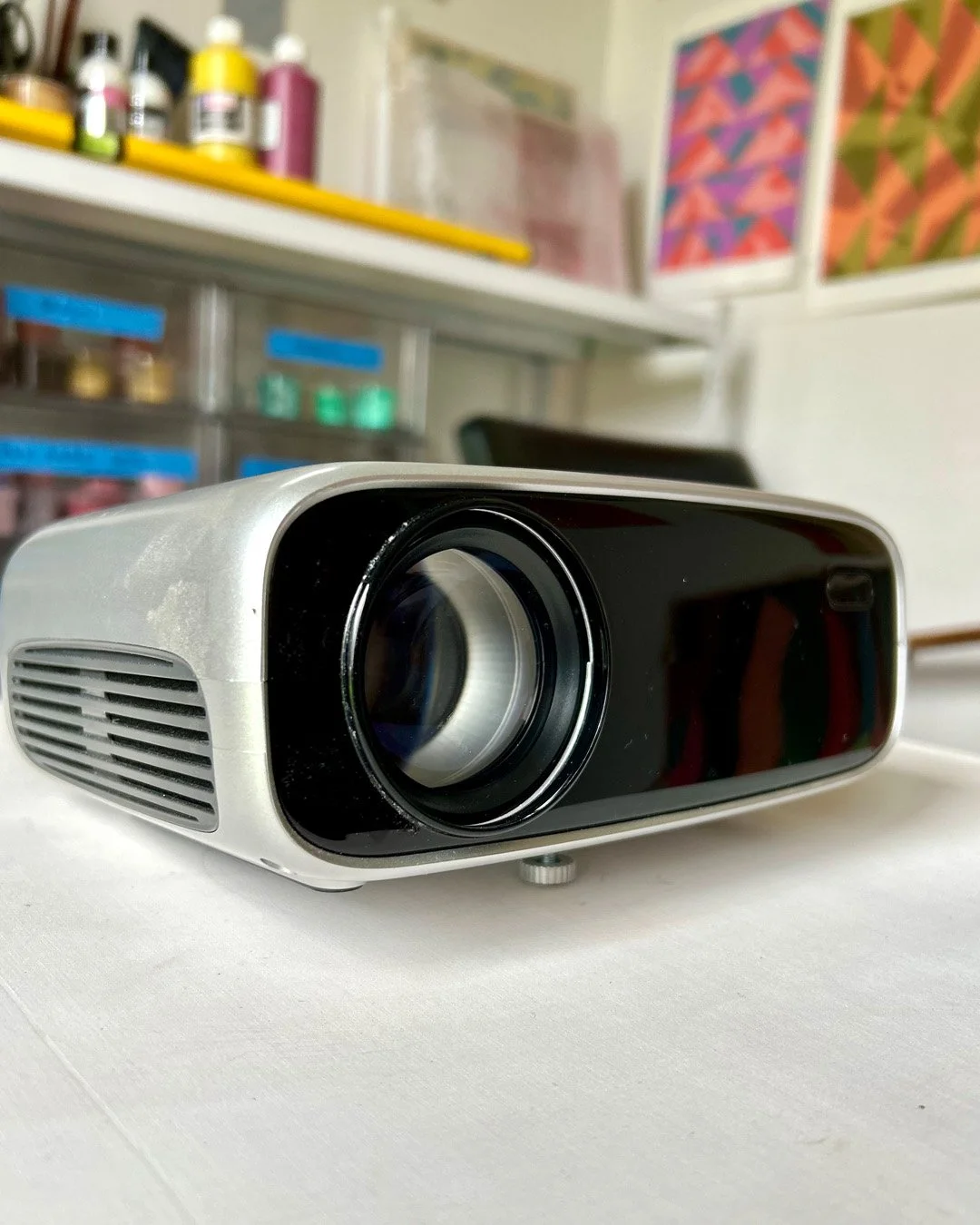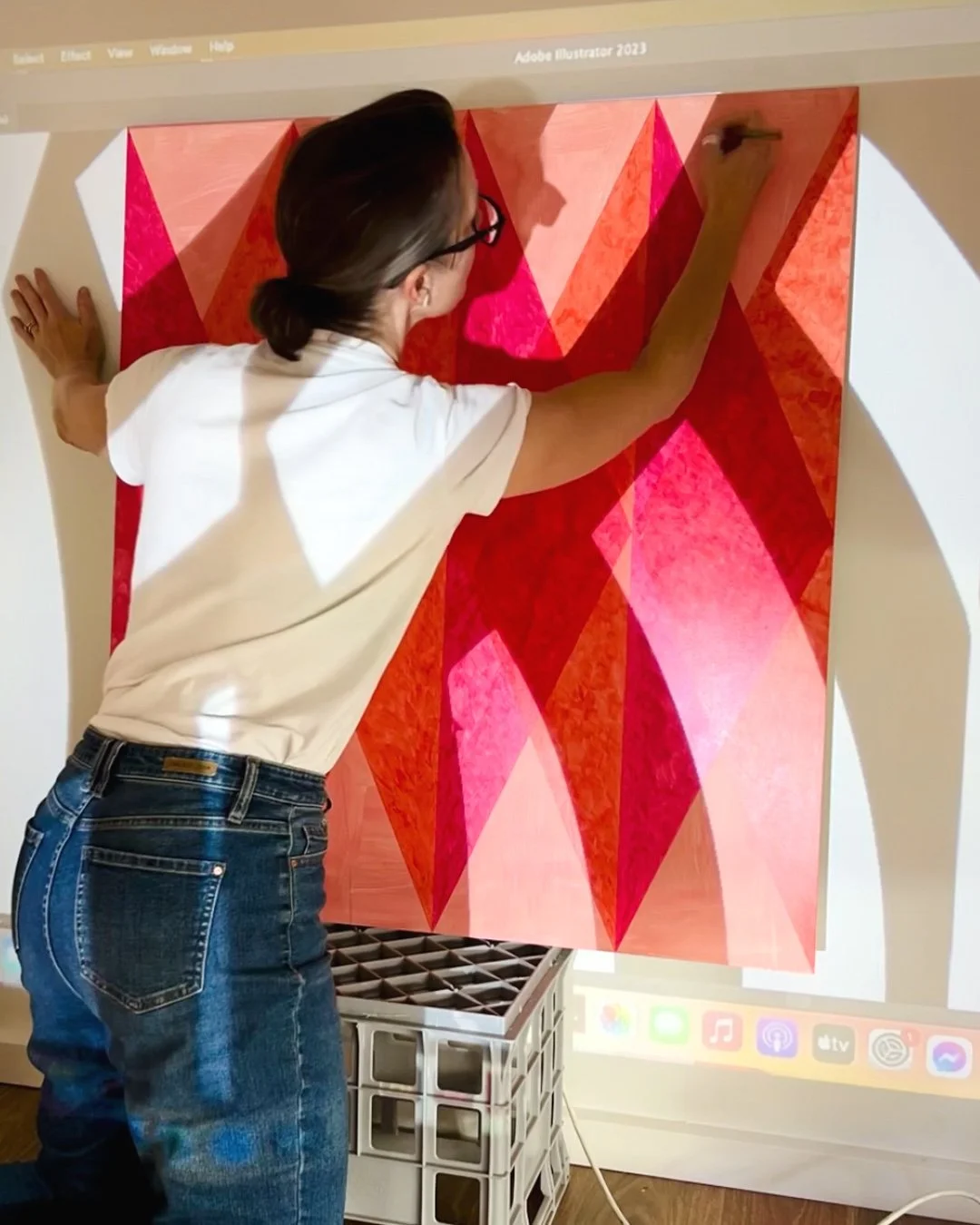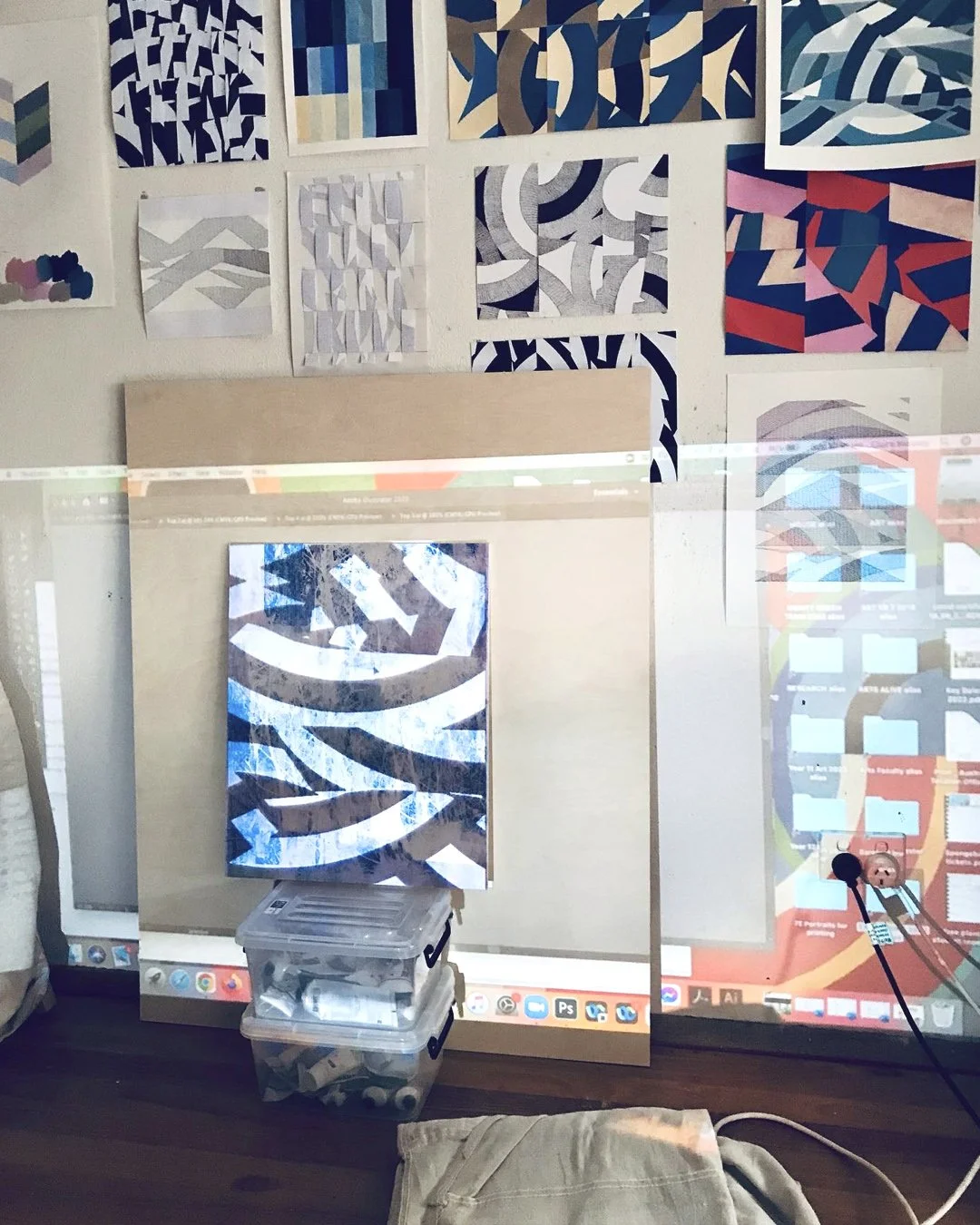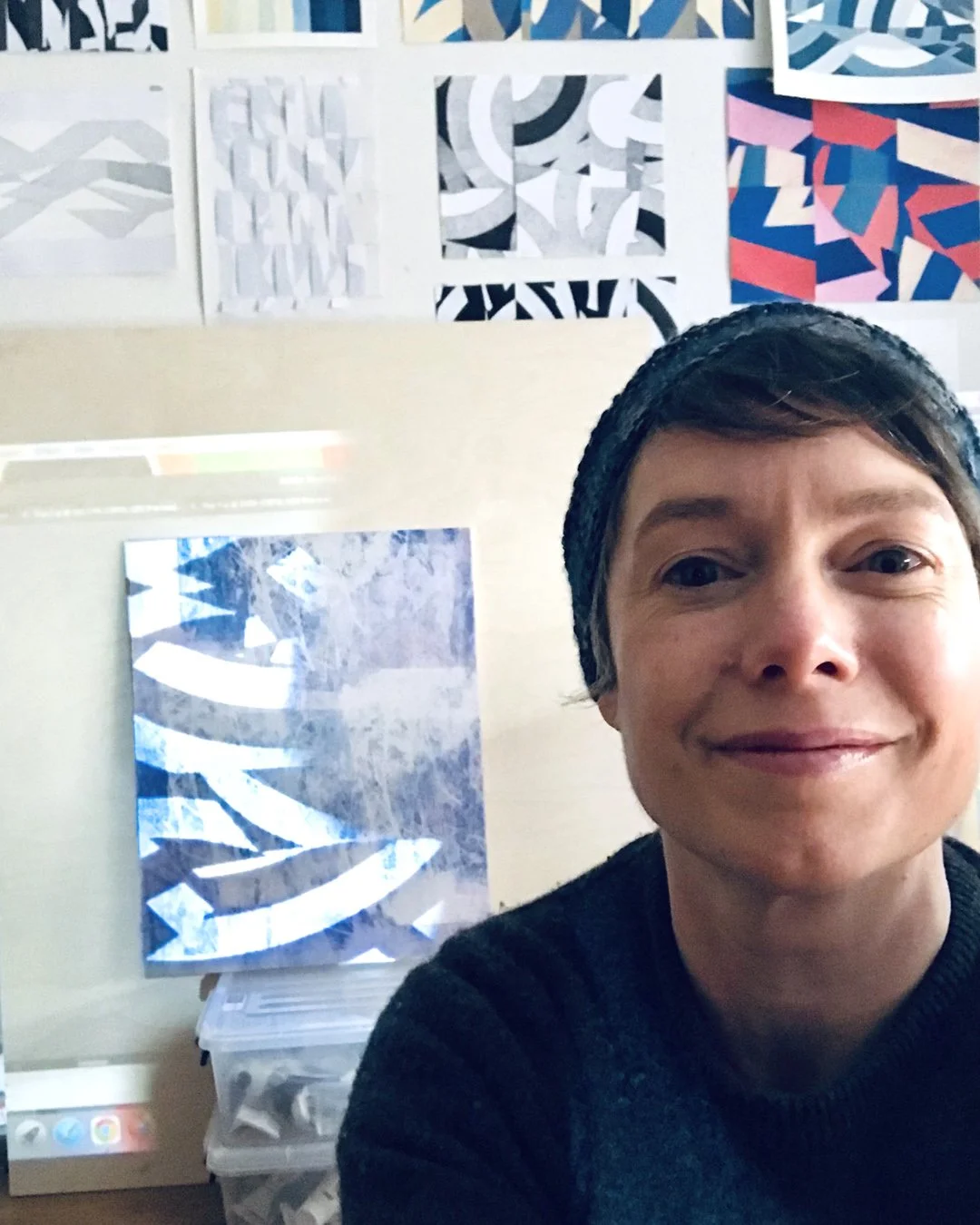I see the light - the last thread (Part 3)…
The last catalyst: a data projector.
It may seem prosaic, but is not an exaggeration to say that the decision to buy a data projector opened up everything in my practice. Not just for the textile works, but for my paintings and drawings too.
So, how did this bundle of technological joy transform my art…?




When I first started to explore embroidery in my work, one of the biggest obstacles I had was creating the patterns.
In my work I’ve developed a visual language that uses pattern as a method to map interference; investigating how different orders of information and variously encoded visual patterns can potentially clash or dovetail, exploring continuity and disruption, construction and destruction, impermanence, transience and cycles of fragmentation and repair. Phew.
I generally start all of this by using collage to create fragments - breaking apart patterns so I can put them back together again.
I know, very Sisyphean.
Before the data projector (BDP) when I wanted to use these fragmented patterns in my work I would physically cut up and collage the printed paper patterns, photocopy them to scale and then transfer them to wood painting panels using an acrylic medium.
For the drawings (BDP) I would take those same photocopied collaged patterns and trace them onto drawing paper using our living room window as a makeshift light box.
Bits of paper. A PHOTOCOPIER (actually photocopiers are pretty cool…I’m not dissing photocopiers) The LIGHT OF THE SUN (which again, fairly useful…but not really ground-breaking)
Not exactly the height of advanced technology.
These methods worked okay, but they had their limitations (although these limitations were still kind of creatively interesting…)
Since I was transferring fragments of paper at a limited scale, I then had to smoosh these together somehow, into a resolution in the painting. This was a challenge, particularly with the larger works. It provided friction, and sometimes it worked better than other times, but it still worked enough.
With the drawings, the limitations of scale (and my living room window) were even more readily apparent.
What this meant was (aside from chewing through my photocopy budget at school) that I was REALLY constrained by scale and materials.
I could only use patterns at the scale I could photocopy or print. And the material I was transferring the patterns to had to be a material that was either rigid (transfer) or light-permeable (living room/lightbox/tracing).
Which did not work well for fabric, which was neither.
The data projector is nothing amazingly revolutionary in itself - just a short, electronic hop from those lumbering overhead projectors with their acetate film transparencies.
It has one job and that job is to project a light-based image onto a surface.
No paper, no acrylic medium, no sunlight (really, no sunlight) needed.
Adding the data projector to my arsenal of tech allowed me to take my collages of fragmented patterns and project them onto any surface I liked, at any scale.
Simple as that.
SO OBVIOUS. (...now…)
This has had a huge impact on my painting and drawing process, but it also provided the last crucial puzzle piece for figuring out how my work could work as textiles and gave me a strategy for getting my patterns onto the fabric.
So, the world is now my (projectable) oyster.
And now my patterns can be textiles.
To be the first to know: SUBSCRIBE to my mailing list






